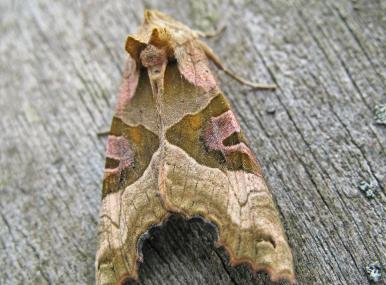The Angle Shades is a medium-sized moth, generally seen on the wing from May to October as the result of two broods. The caterpillars are stout and green or brownish, with faint stripes on every segment. Larvae that hatch in autumn overwinter as caterpillars and pupate in the soil the following spring to produce the first generation of adults that year. The caterpillars feed on a wide range of plants including Dock and Stinging Nettles. This moth is quite common in parks and gardens, as well as woodland edges, scrub and hedgerows.
Moths such as the Angle Shades are common in gardens - why not set up a moth trap at night and see who comes to visit? To attract moths and butterflies into your garden, plant nectar-rich borders and shrubs for them to feed on, and leave patches of nettles and docks for the caterpillars. To find out more about encouraging wildlife into your garden, visit our Wild About Gardens website: a joint initiative with the RHS, there's plenty of facts and tips to get you started.
